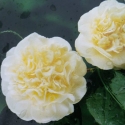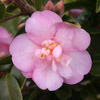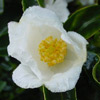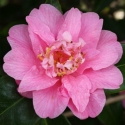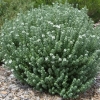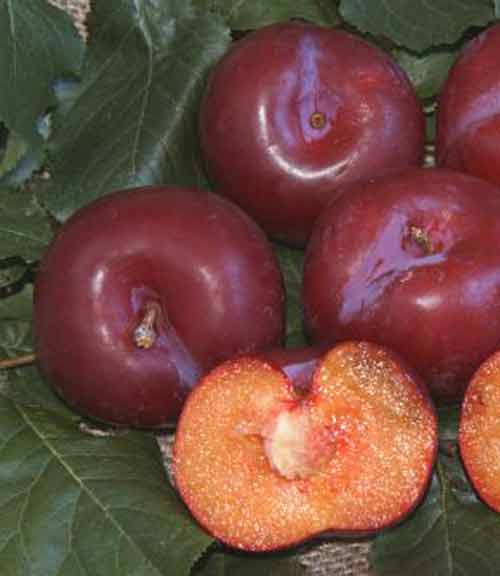Thursday 23rd March, 2017
Hi
Last week it was the short and tall of the Camellia world .. fascinating that there is so much variation, but there is so much more to Camellias, they are just so versatile. They make for great garden shrubs, awesome hedges but they also lend themselves to the world of topiary and form. I think that it is because they are so suited to being cut and regrow amazingly well ... even if you give a camellia the hardest cut that you think it won't come back from, well usually they do... it may take a bit of time to refill out but they will get there.
It takes four years to grow a
Camellia bush for sale from cuttings but it even takes longer to grow the beautiful standards that we have in the garden centre, probably some six to seven years. The trick is to keep that growing point growing upwards until it's the desired height - usually around 1 to 1.2 metres and this will add approx. one more whole year onto the age of the plant. At this delicate stage the tree will be staked as it grows so as to keep our new standard with a really nice straight stem. Once the stem has reached the height the grower is after then it gets tipped removing the leading bud so that the plant starts to push side shoots to form the head of the new standard. These new side growth will get tipped several time so the standard-ised Camellia grows a full head and is on the way to being a cool structure in the garden. You can't rush this process as you need to make sure that there are enough leaves left to feed the plant so that it can grow.
This whole specialized process will add another two or three years onto the production from cutting to bush to standard. Bush grade plants are tipped at an early age so that they do bush up and become full more quickly.
Now everyone thinks of a standard as a round ball on a stem (like a lollipop), but the are so many variations of this that you could create, for example - a round top with a flat bottom like half a circle. Cones or pyramids shape could also look quite cool ... I know that over the years I have even suggested square shapes for those that have very contemporary and square like houses that may well suit a more modern look.
Don't be limited to standards, I have a very cool cone of
Night Rider Camellia sitting pride of place in a central feature position of the Villa bay window and after its been trimmed it will flush again with burgundy red leaves as this clone will do. The chocolatey red flowers are a bonus too..
For a narrow garden you could even trim pillars esp if space is limited and do a series of these in threes or fives. I know that
Transnokoensis and
Silver Column will lend themselves to being natural pillars but clipping will thicken and enhance their natural forms. Such a fab idea for narrow spaces, especially in semi shaded positions where the upright conifers probably won't work so well. I would do a series of three or five just to get that look.
Espalier is the form where you train Camellias on a frame work of wire. There are a couple of shapes that spring to mind and that is where you set up the wires along the fence at approx 50 to 60 cm spacing deep, or create a fan shape going upwards. It is best if the wires are set up properly, set out from the fence on hook and are also properly tensed.
Many of the
Sasanquas are suitable for this kind of work as they have a somewhat semi weeping habit lending themselves to be tied along wires. Use cloth or soft material to tie plants to the wires as it stretches as the stems thicken but they should be released every year or so and retied. Sasanquas suitable for espalier work could include
Mine No Yuki,
Setsugekka,
Early Pearly and the like.
Observation is your best skill in the garden... are you watching ???
I have been watching a small patch of brown leaves on our Buxus cones in the garden thinking OMG that is that nasty Buxus Fungus. It's amazing at how fast it spreads and only just a couple days later, I spied patches in other hedges and its not even rained.
I have been a bit surprised as it seem a tad early this year, as usually the Buxus Fungus rears its ugly head closer to the cooler wet weather of the early winter. I guess its been such a cool wet summer which is why the blight has come early and our hedges are just flushing with lots of fresh young growth; those fresh young leaves haven't hardened of yet and are probably perfect for infection.
I had to spray though as rain is forecast for the weekend and Ill do another after the weekend but suggest that if you have brown patches suddenly happening in your Buxus then get out the Copper and spray before it rains and again after the wet period. Regular use of Copper at this time of year may just keep it in check; spray before and after rain.
If your roses are looking past it, there may be time for one last flush if you prune them back now, remember it takes seven to eight weeks to flowering following a prune back, so that would see them in flower in mid- May around the 20th of the month. You probably wouldn't want them to be flowering too much later. Ours in the garden are just coming up to bloom again now and this will be the last flowering for the year for them; after this flush we will just leave them to finish.
The sales table
Plum trees all 50% off except for the Plumcot Spring Satin. We need to have tidy up of these and what is here can all go. If you have the space for extra couple of plum trees then we may have be a couple of different varieties that you haven't got!! Otherwise pre-order your plum trees for the next season (due in July).
Dianella Wyeena Now this is really a goodie and we are so lucky to have these as a deal. Normally these are $19.99 but these can go out at $12.99. The grower had too many and needed the room so we get a deal, which we are happy to pass on to you! Weeyna is an Aussie Dianella, tolerates full sun and a dry position; has attractive cream and green foliage that would contrast well against other plants.. a real winner
Westringia or Aussie Box choose form either Mundi or Grey Box ... An awesome plant that has rosemary like foliage and will clip to make a tight little hedge just like Buxus. Needs full sun and good drainage as you would expect from the Aussie Breeds, normally $19.99 these now just $12.99 each.
Cannas half price these were cheap but I will be needing the space so they are going at half the marked price. Great tropical foliage when they are in their season, brightly coloured flowers, cut them back in the winter and they will start every season again fresh. Apparently good planted on the edges of water ways as they filter the returning water to streams.
What's due in, coming, and or arrived
Garlic is coming and as much as I hate to say that winter is on its way but we do have to be planning for the season. You can pre-book Garlic and at this stage it will be printanor arriving this early.
Lily of the Valley or Convallaria ... this is the perennial one and can be a bit tricky to grow as it like the right sort of spot in the garden. We sell pips or little pieces that I suggest you keep in the little pots until they leaf up in the spring. They don't like being too wet or dry and make for a pretty pot plant as well.
Rhododendrons all the new seasons have hit the nursery though not quite all away in Alphabetical order yet, however we are working on that one. Rhodos like to grow in the passing shade of a tree or such; they also like quite composted or peat-like soils that are quite retentive of water but not wet.
Feijoa time is here again and in the garden we are starting to have masses of fruit becoming ready. Arrived today was a variety called
Anatoki that we have had for a while that has exceptionally large, sweet fruit that has come from a breeding programme.
Kakariki is another such large fruited variety and we have stock of the other traditional cultivars like Apollo and Mammoth.
Feijoas at home.
Take the time out to watch the colours of the season changing into Autumn - the leaves are definitely on the turn, and there is plenty of colourful berries and fruits around to see. Enjoy the views, harvest the fruits, and have a great weekend.
Kind Regards
Lloyd, Harry and the Wairere Team
Make it a Wairere weekend where even GNOMES know that gardening's not a drag
